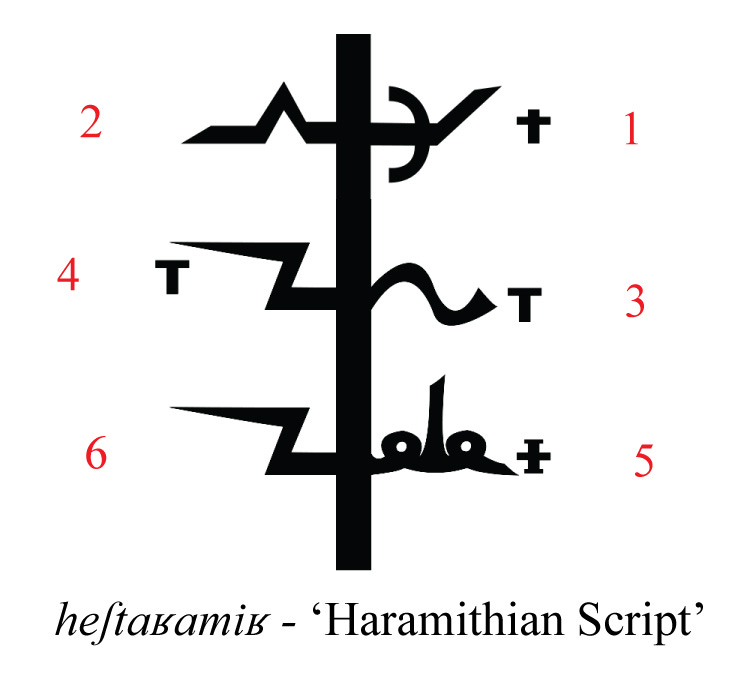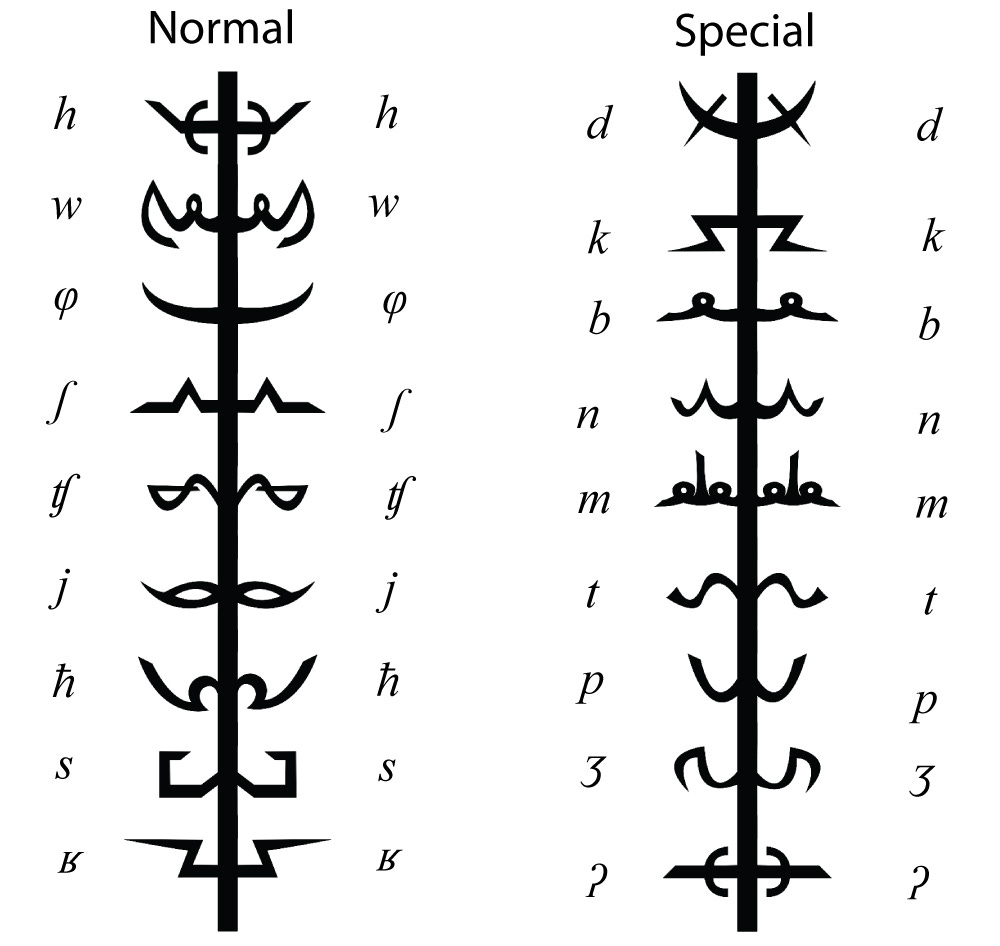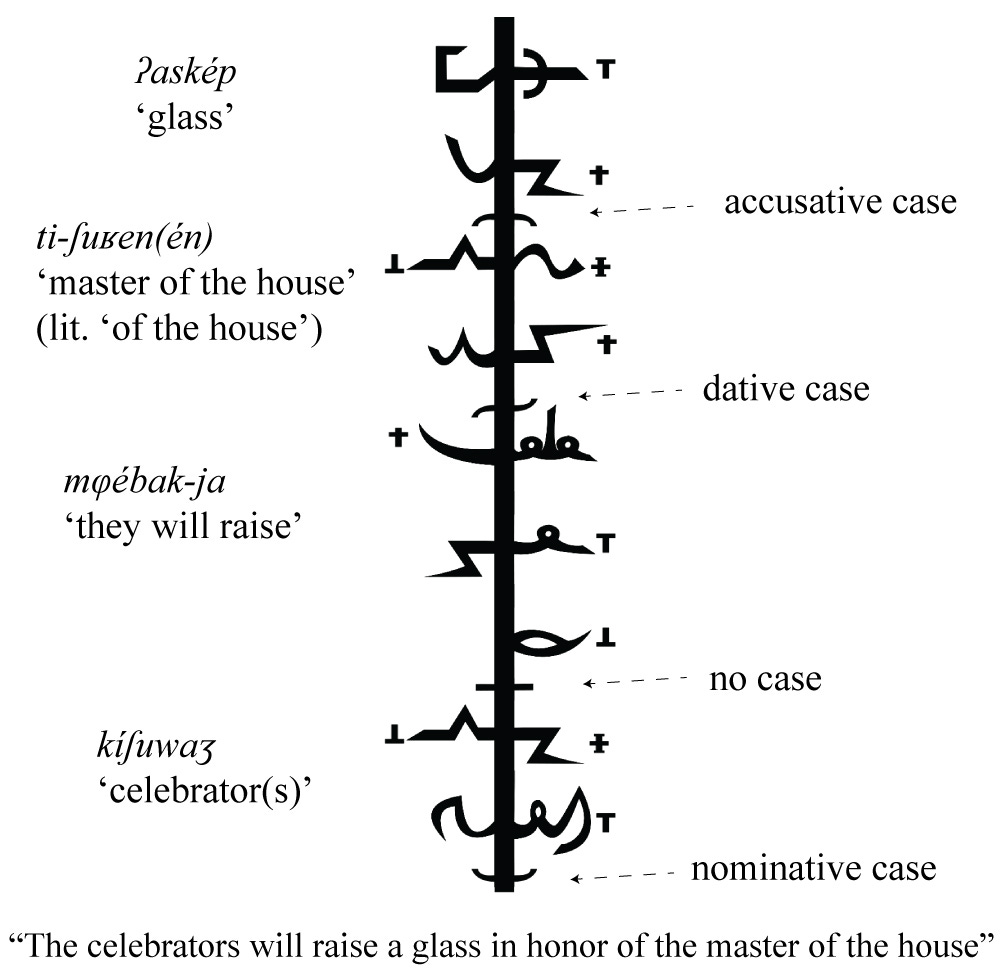No other writing system, or indeed any system of symbols, can be traced further back in history than the Haramithian script. Even in the earliest periods of the known history of Hameya, this script was revered as more ancient than the world itself. According to Haramithian lore, Harami created the world by writing it in this very script. Thus, Haramithians believed that the spoken form of their language was merely the human form of the divine writing of Harami.
In this first lesson, we will learn how to read and write in the Haramithian script, according to its use by the human Haramithian speakers and writers of the classical period. Haramithian script is an abjad, meaning that every letter represents a consonant. The letters all branch out from a vertical line (“The Trunk”), and are read from right to left, up to down (see Example 1 below). This means that the consonant’s place in a word determines if it will be written in its left-form or right-form, which are mirror images. The (non-obligatory) vowel markings, that some scholars claim to be a later invention, are written on the sides of each letter.
The following “trees” show all consonants in Haramithian, divided into “normal” (generally softer-sounding) and “special” (generally harder-sounding). Haramithian Phonology and its “whispery” quality will be discussed in a later lesson. Every letter is written twice, to show the left and right versions of each. IAP symbol for approximate pronunciation is written here next to each letter.
All vowel markings include a small vertical line (“small trunk”), and a small horizontal line. Vowels with a lower horizontal line represent sounds with a higher degree of lip-rounding (e.g. “u”). The word fafefofufi (“exhausting”) below, shows all 5 vowels. Although diphthongs are extremely rare in Haramithian, they can be represented by having two horizontal lines in the same marking.
A third kind of symbols serve a dual purpose: to visually separate between words, and to mark the grammatical role of the word above it. Very generally speaking, the nominative sign marks the subject of a sentence, the accusative sign marks the direct object, the dative sign marks the indirect object, and the non-case sign marks the predicate. This is of course an over-simplification, but it is enough for the time being (Haramithian case system will be discussed in a later lesson).
-JB Penrose
The Haramithian script is the first thing Adaam and I invented in Haramithian, about 16 years ago, and I still think it looks pretty cool. Only the case-markings are a later invention. I will dedicate a full post about the process of making a font out of this script (which wasn’t easy, to say the least!).
I am using IPA (international Phonetic Alphabet) signs to write the pronunciation in these posts (or: IAP - Intercontinental Amaranth Phonetics). For those of you who don’t know how to read them, here is a cool site with an interactive IPA chart with sounds.
-Tomer




